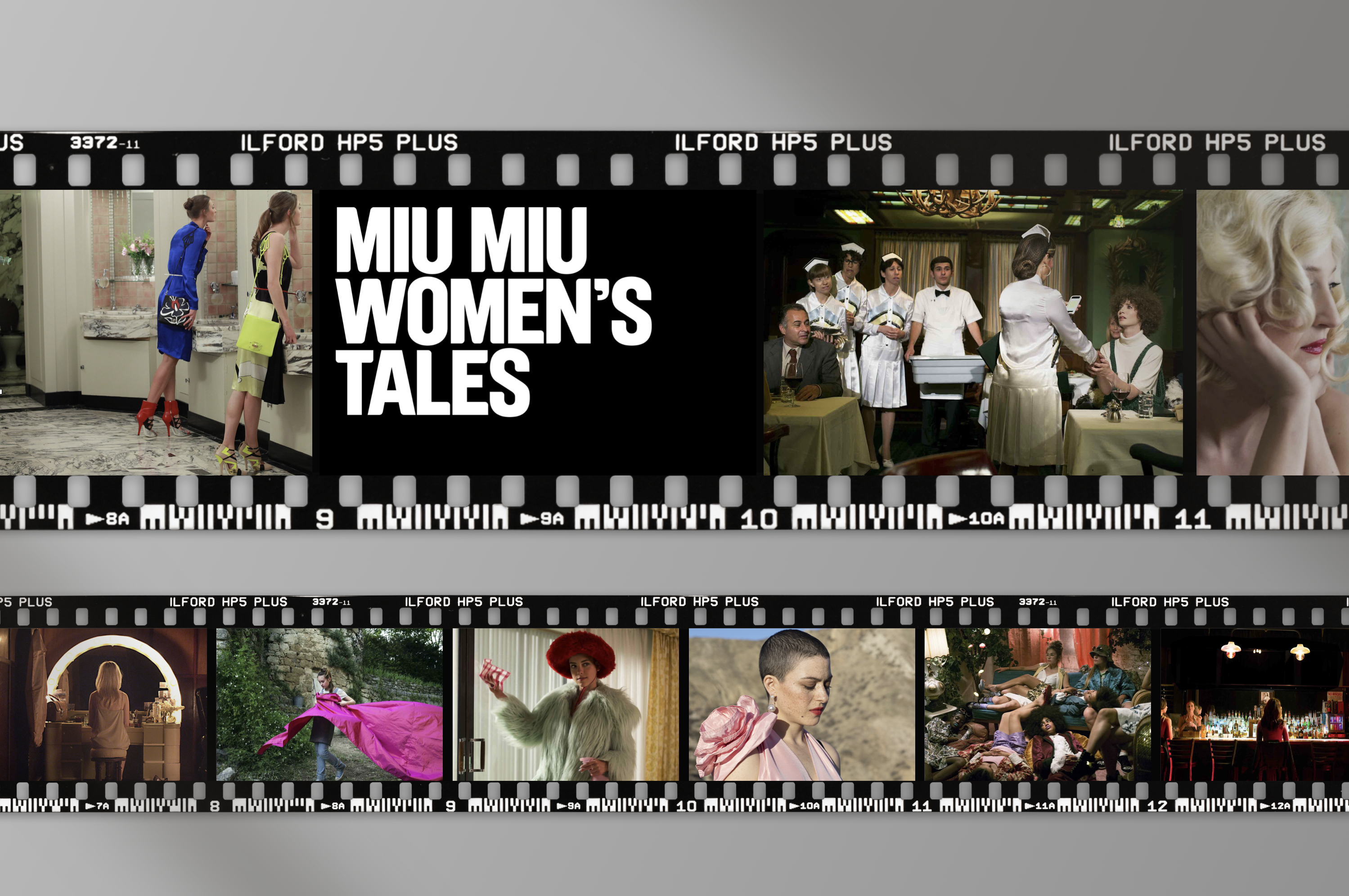A Look At ‘Miu Miu Women’s Tales’ Films Since Launching In 2011
INSIGHTS
By Long Nguyen
Fashion always has change to it, but March’s global lockdown forced the entire ecosystem of fashion to interrogate itself over issues that have been simmering underneath for many a season. The result was a Spring 2021 fashion season on the cusp of boling over to reveal substantive change.
There has never been a fashion season like this past one, but there has never been an NBA, NHL, MLB, or NFL season like this one either – as each league adapts to the new reality, so too must all players in the fashion league.
In this debut of this series INSIGHTS, I will examine the different creative projects, undertaken by brands outside of the seasonal fashion weeks, to buttress the cultural outreach to foster a shared community of ideas rather than simple exercises in branding marketing.
One of fashion’s longest and most promising projects that has fostered as well as supported a community has been Miuccia Prada’s artisanal film series championing female directors: Miu Miu’s Women’s Tales.
The driving concept behind the project is to open up the conversation not only about the role of fashion in contemporary society but also that of physical appearance and femininity and vanity more broadly. With that in mind, the women behind the camera of the 20 films that have been produced so far offer an intelligent and emancipated insight into their own distinctive and inspiring universe: into their own Women’s Tale. Some of the best female directors of our time accepted to be part of this series, and they have narrated in an original way the beauty, the complexity, and the several and imponderable aspects of the human being.
– Miu Miu statement Venice Film Festival, Sept 2020
Going onto share “Many stories have been told in a very specific environment where the women’s gaze is celebrated and is the starting point for many conversations and so much more,” explained Miu Miu as the house introduced the 20th installation of the Miu Miu Women’s Tales at the Venice Film Festival in early September 2020 with a new short film directed by the French filmmaker Mati Diop entitled In My Room.
As a fashion brand and through these films, Miu Miu has been evolving into a hub of cultural and social innovation and becoming a service company in addition to selling products. These kinds of associations are to cement long term and loyal relationship with consumers and audiences globally.
These ‘Women’s Tales’ sought to illustrate the nuanced journey towards affirming one’s identity and place in society against any sets of ingrained labels and transcending any boundaries hindering personal growth from the views of filmmakers across the globe like the American Ava DuVernay, Miranda July, So Yong Kim and Crystal Moselle, the Argentinian Lucrecia Martel, the Japanese Naomi Kawase, the French Agnès Varda and Mati Diop, the Palestinian Hiam Abbass, the Italian Giada Colagrande, the Saudi Arabian Haifaa al-Mansour and a crop of Hollywood actresses turned filmmakers including Dakota Fanning, Chlöe Sevigny, and Zoe Cassavetes. The choices of filmmakers reflected the geographic and ethnic diversity of Miu Miu, representing different views through artistic storytelling.
Released each season since Spring 2011 to correlate with the arrival of new merchandise at the 170 global networks of Miu Miu standalone and concessions stores, the films established a Miu Miu consciousness for its audience already captured by the iconic Matelassé, Confidential or Coffer leather handbags or any of the buckle leather pumps.
These women made visual compendiums providing the Miu Miu brand with a deep footing in the cultural and social space, an anchor that often eluded many fashion brands, particularly luxury fashion.
Every time a woman makes a film, it is a political act, in my view, whether we mean it to be or not. Films by women – whether comedy or drama, documentary, or narrative – illustrate the human experience through a women’s voice, through a women’s eyes, through a woman’s creativity. Experiences which are often marginalized, fabricated, or simply ignored.
– Ava DuVernay, American Filmaker upon the release of her film The Door in February 2013
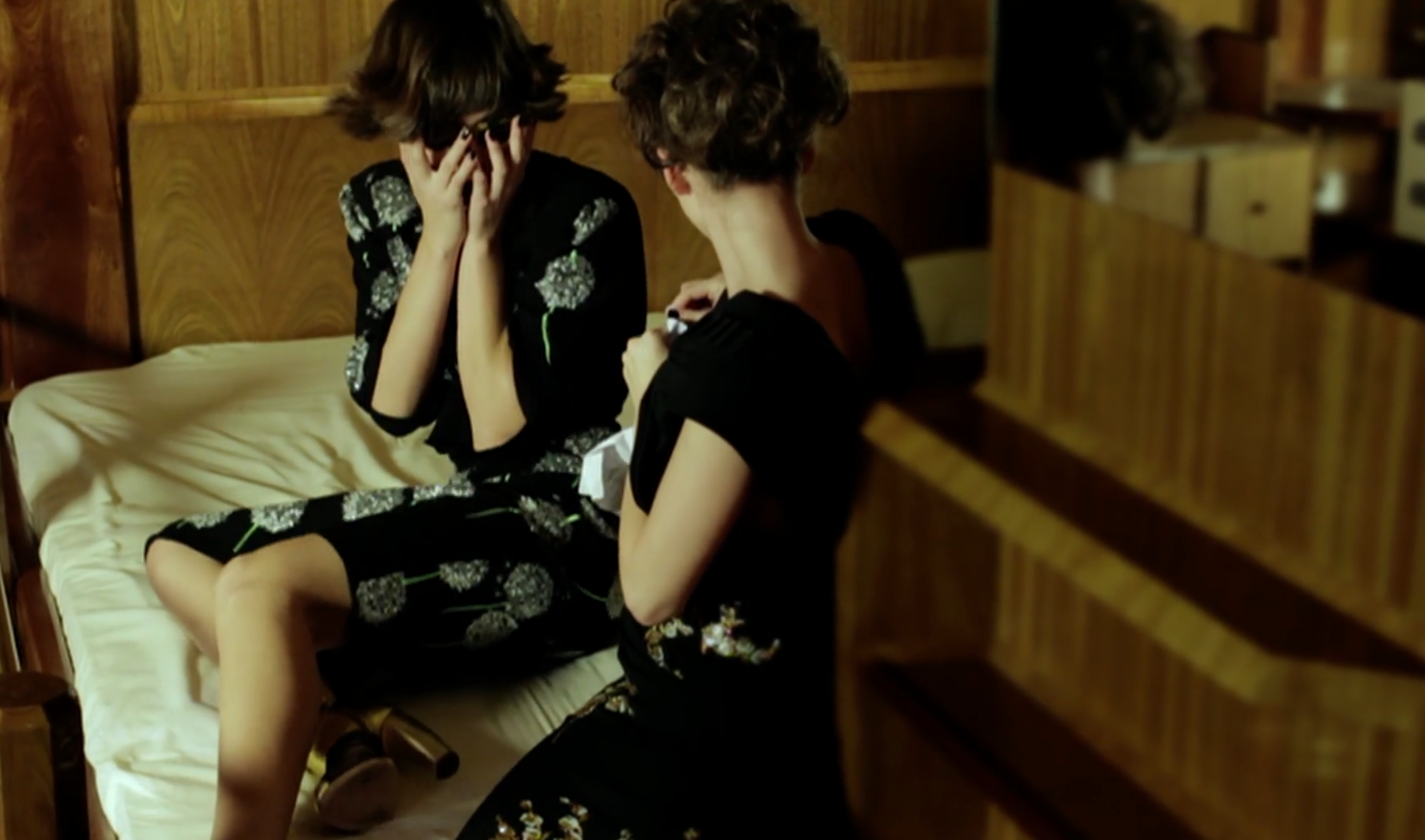
Miu Miu Women’s Tales #2 (2011)
The seasonal Miu Miu fashions in each film dedicated to a particular collection are incorporated as costumes within the stylistic repertoire of each of the films in seamless ways that rarely distract from the screen narratives. The clothes were seen as both sophisticated blending in with the characters like the Fall 2011 print dresses on the women in Lucrecia Martel’s Muta and at times subversive where they took on the principal role like the red lace dress from the Spring 2012 collection in the Giada Colagrande film The Woman Dress or the light grey silk stain halter dress with glass beadings known as dress # 328 that the acted as the main character in Alice Rohrwacher in De Djess.
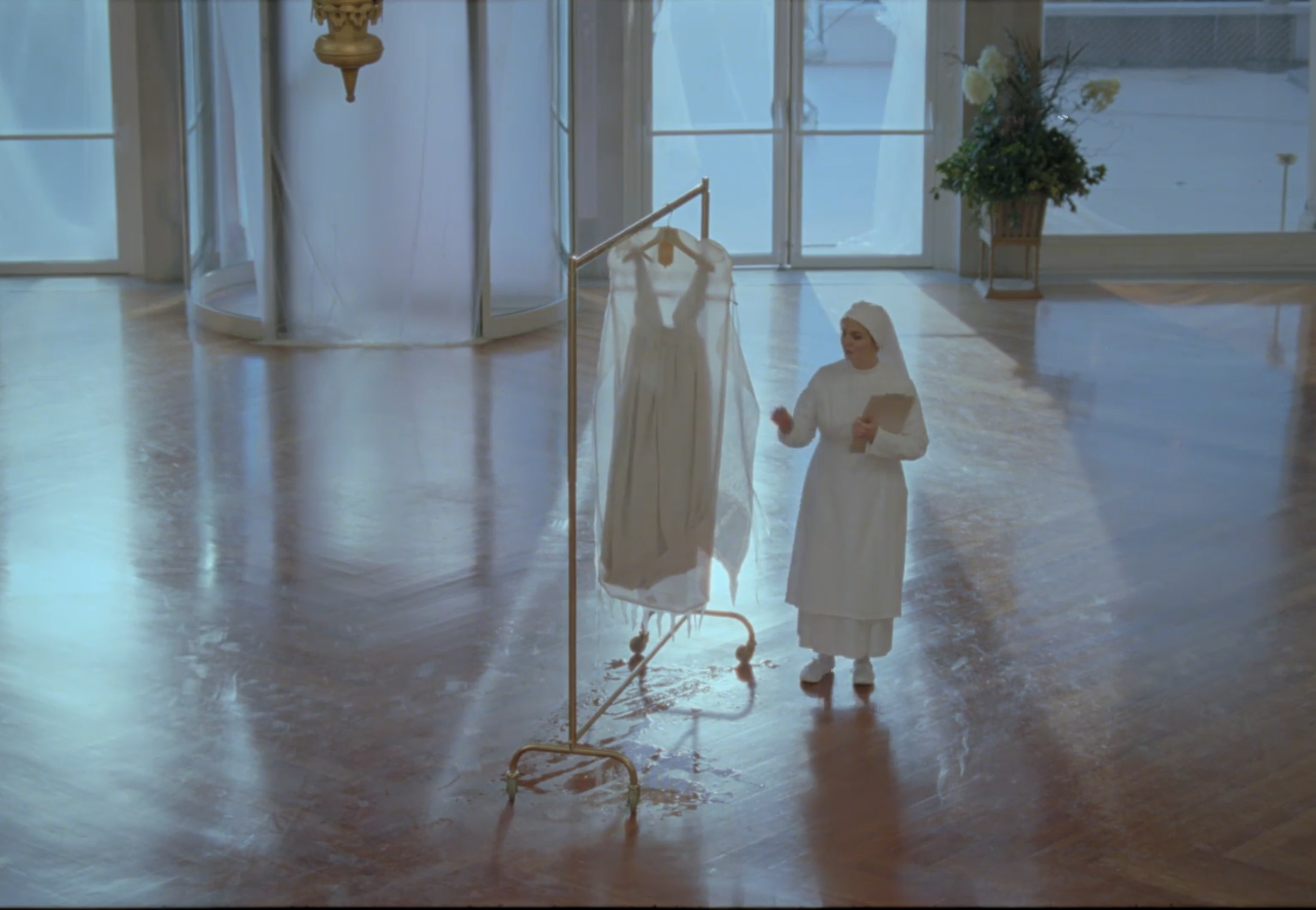
Miu Miu Women’s Tales #9 (2015)
At times the Miu Miu clothes are upfront and worn by the main characters like the calm women in The Powder Room by Zoe Cassavetes or on the girl gang hangout in That One Day by Crytal Moselle or on each of the women in It’s Getting Late by Massy Tadjedin like the black square and circle crochet dress on the singer Zola Jesus as she performed her songs on stage. But in other instances, the clothes were barely noticeable like the girl in her blue stripe shirt and tutu skirt in Seed by Naomi Kawase or in the cast of characters texting other people to communicate in Somebody by Miranda July or as a single black long sleeve dress with white buttons and decorated pockets seen inside a store window in Les 3 Buttons by Agnès Varda.
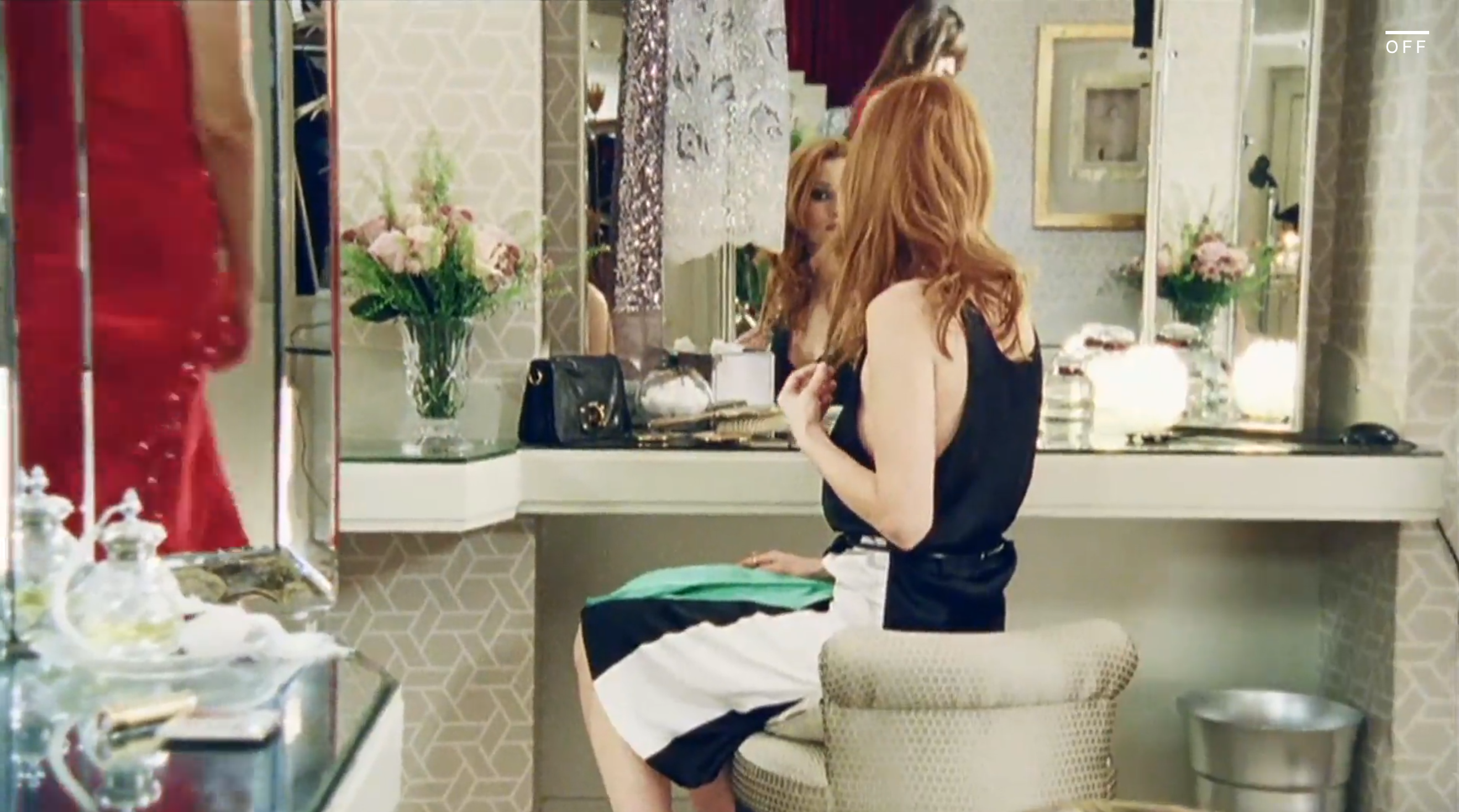
The Powder Room – Dir. Zoe Cassavetes
Miu Miu Women’s Tales #1 (2011)
It’s Getting Late – Dir. Massy Tadjedin
Miu Miu Women’s Tales #4 (2012)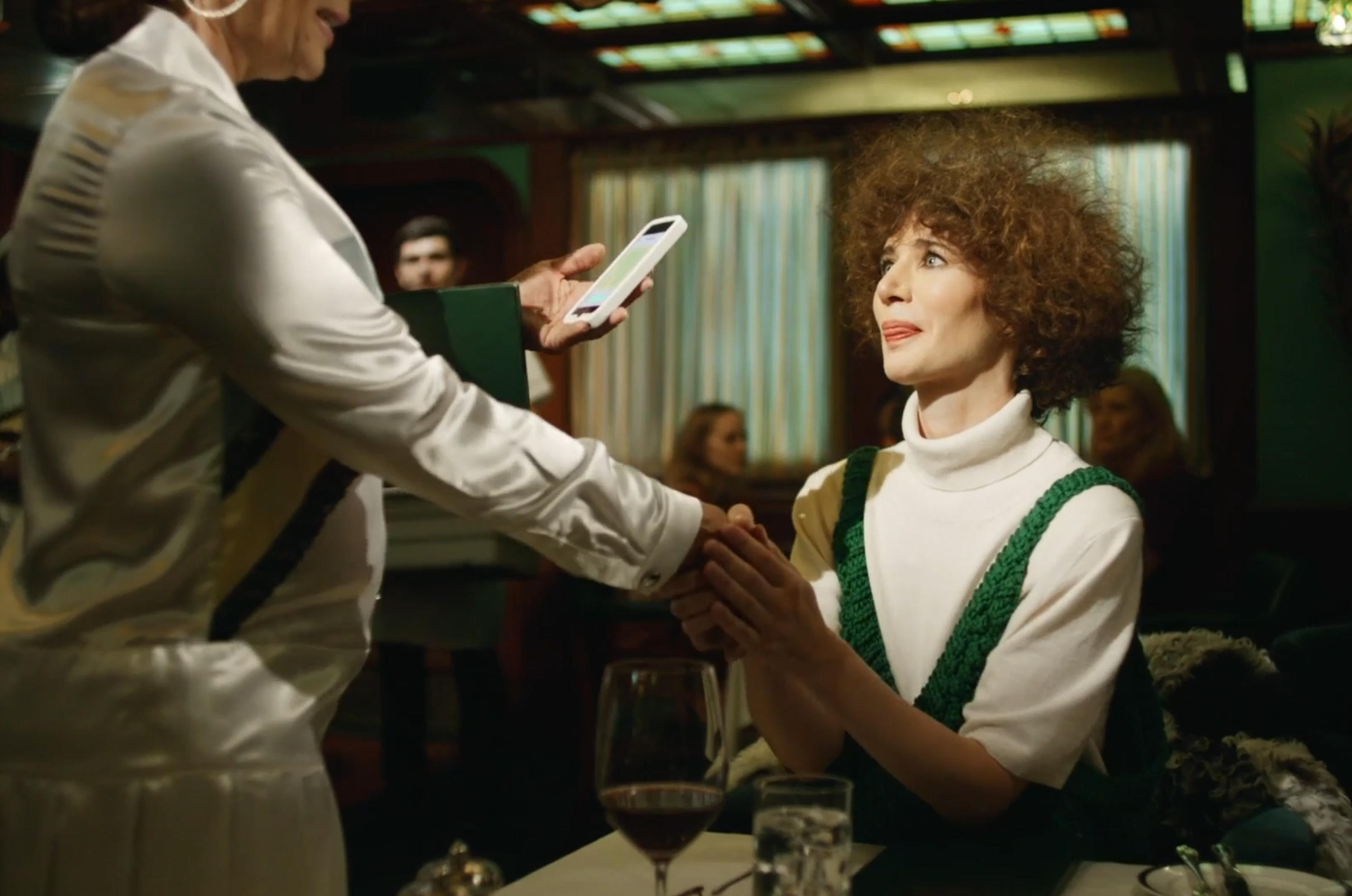
Somebody – Dir. Miranda July
Miu Miu Women’s Tales #8 (2014)
Les 3 Buttons – Dir. Agnès Varda
Miu Miu Women’s Tales #10 (2015)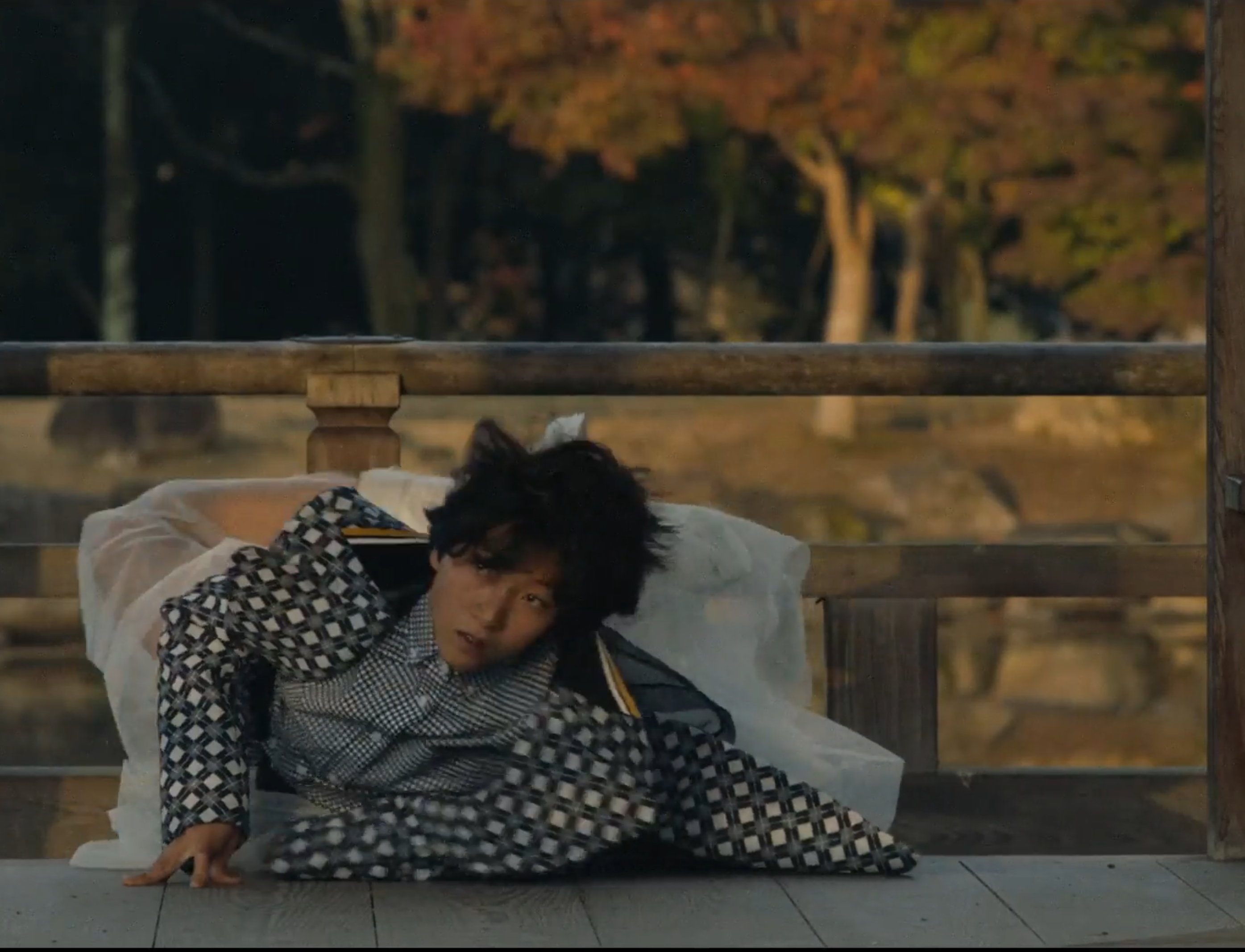
Seed – Dir. Naomi Kawase
Miu Miu Women’s Tales #11 (2016)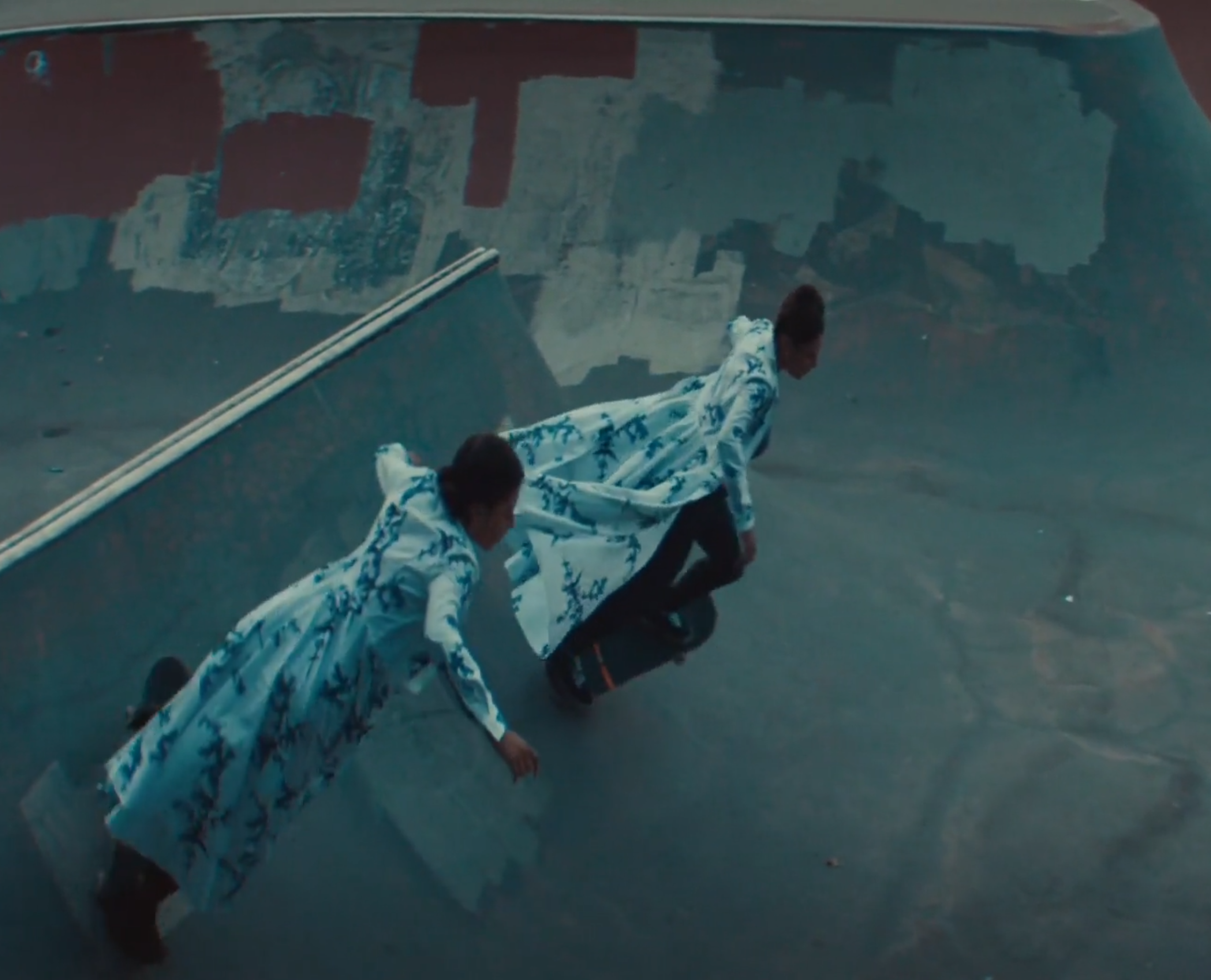
That One Day – Dir. Crytal Moselle
Miu Miu Women’s Tales #12 (2016)
Overall, the Miu Miu clothes informed and enhanced the characters that wore them. Still, the garments remained anchored within each film’s visual consistency despite taking on unusual center stage presence. Furthermore, the clothes’ choices for the films demonstrated a remarkable consistency from the point of view of showing a Miu Miu signature fashion look and style overall than in highlighting the seasonal differences.
From the patchwork blue/white/black sleeveless satin dress worn by the model Audrey Marnay in the first film in February 2011 The Powder Room by Zoe Cassavetes to the red long sleeve dress with round collar and waist ruching worn by Carmen Lynch in Carmen by Chlöe Sevigny to the last dress black dress with silvery embroideries seen on one of the girls in the Paris apartment singing ‘La Traviata’ in In My Room by Mati Diop where the French director said in an email in the screenshot at the start of the film that she wanted to used the recordings of her grandmother, Mati made in the last few years of her life from inside her apartment in the 17th arrondissement as the main storyline along with footages she made during the lockdown with additional filming to incorporate the Miu Miu Fall 2020 clothes.
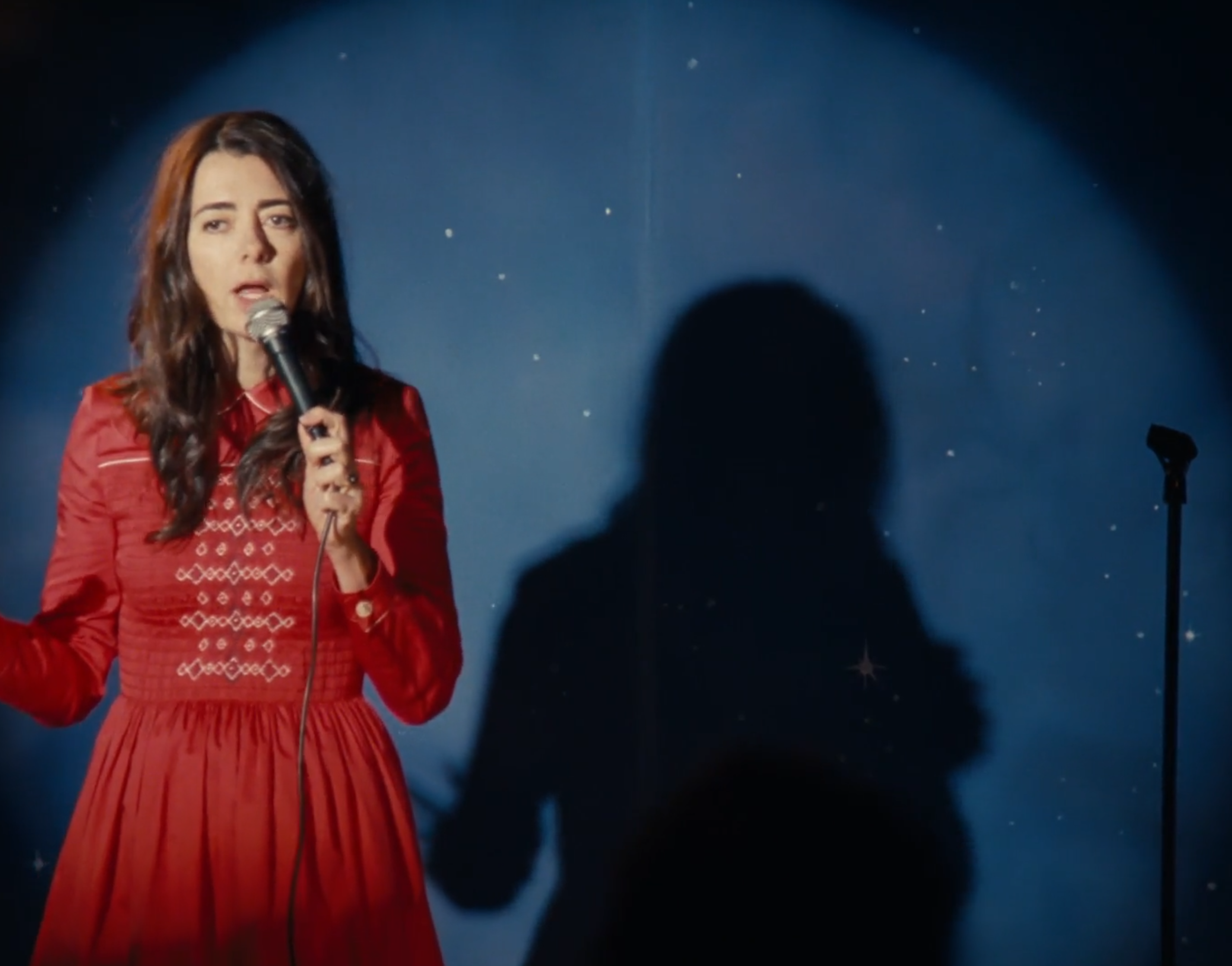
Carmen – Dir. Chlöe Sevigny
Miu Miu Women’s Tales #13 (2017)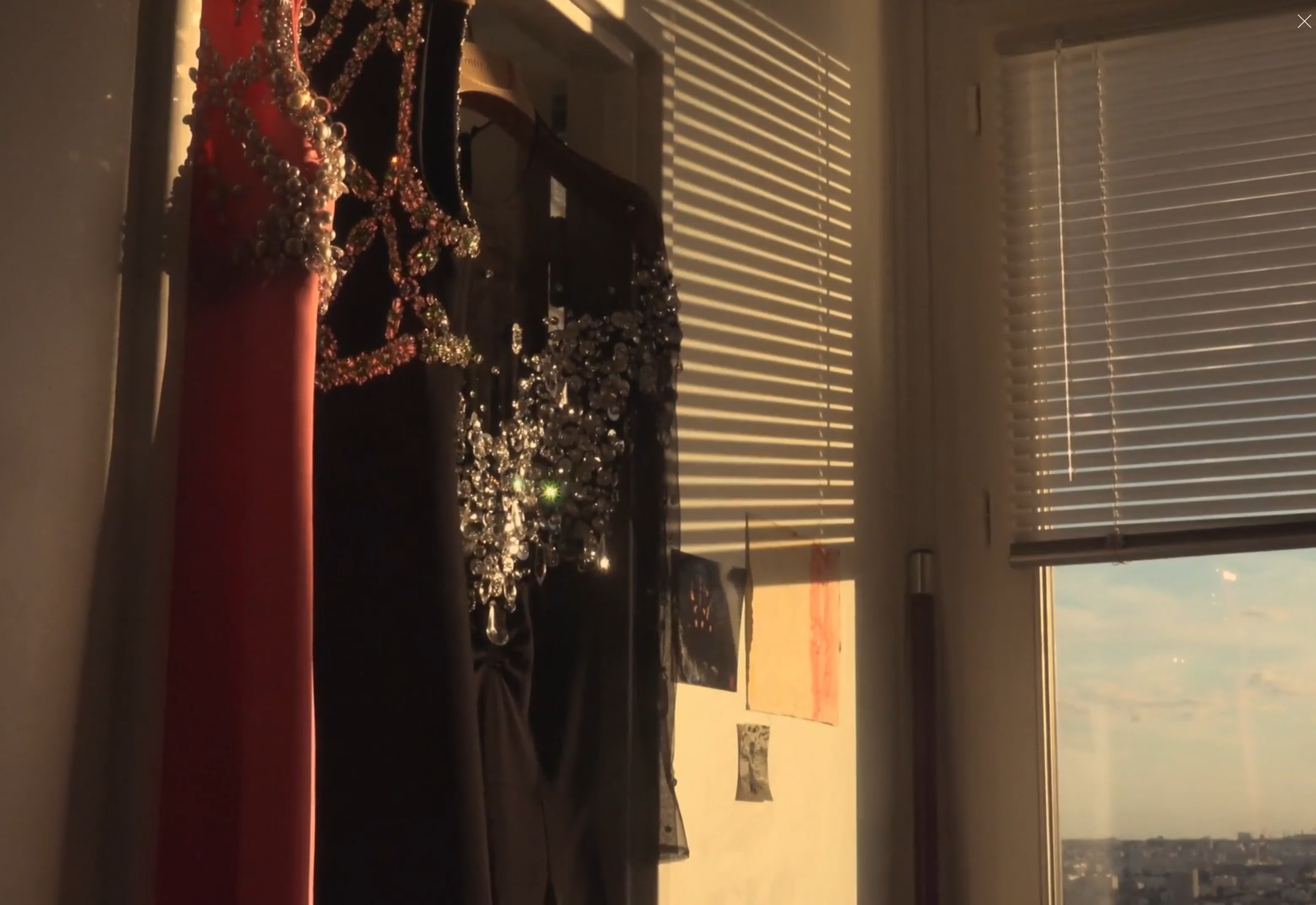
In My Room – Mati Diop
Miu Miu Women’s Tales #20 (2020)
The audience is treated to a consistent view over the years of the signature Miu Miu style with different manifestations each time. Even the colorful clothes appropriate for a cold war nuclear luxury bunker from (The [end) of history illusion] directed by dancer/choreographer/filmmaker Celia Rowlson-Hall, did not stray far from portraying this consistency from film to film. “I am in love with the transformation stage in a girl’s life when they are not quite a girl but not quite a woman,” explained That One Day director Crystal Moselle. Her coming of age story was about a young skater navigating personal loneliness to find comfort in a group of friends and ruling the skate arena dominated by boys showcasing looks from fall 2016. Or the same can be said of the clothes worn in a scene of recalled memory from an older woman returned to an empty loft where she had spent her younger years now as she sat and reminisced in the space what was her life and what could have been good and bad times in Hello Apartment directed by Dakota Fanning.
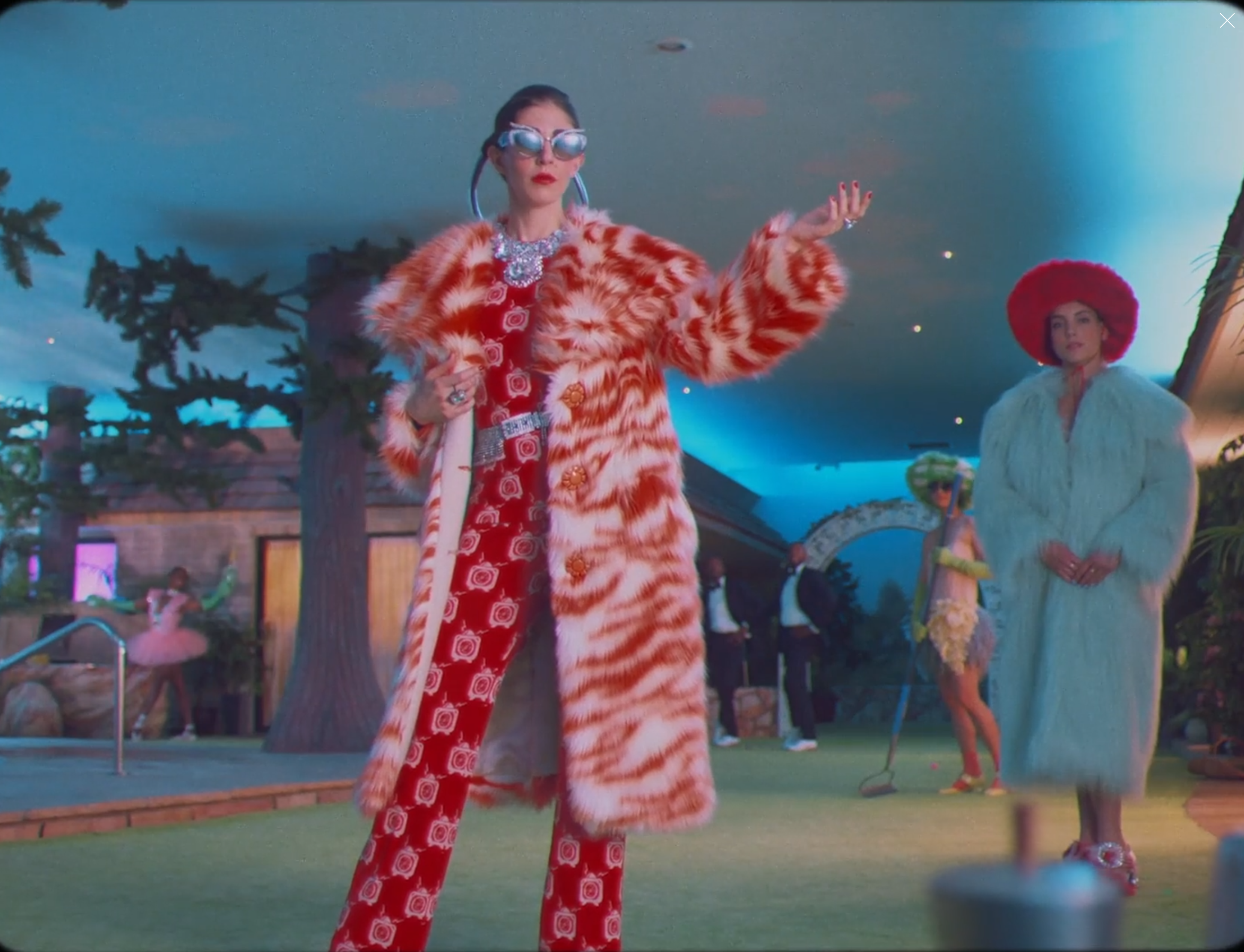
(The [end) of history illusion] – Dir. Celia Rowlson-Hall
Miu Miu Women’s Tales #14 (2017)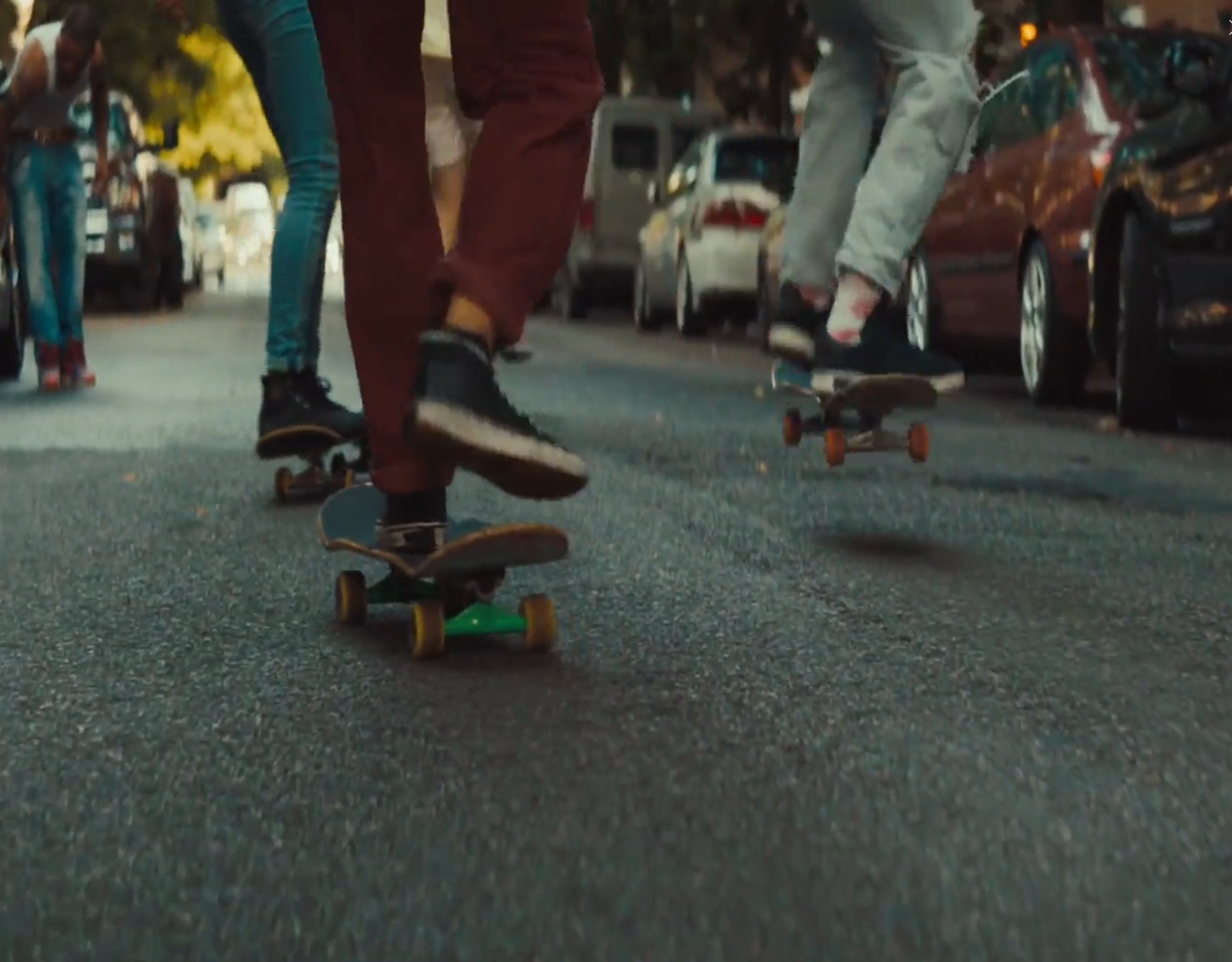
That One Day – Dir. Crytal Moselle
Miu Miu Women’s Tales #12 (2016)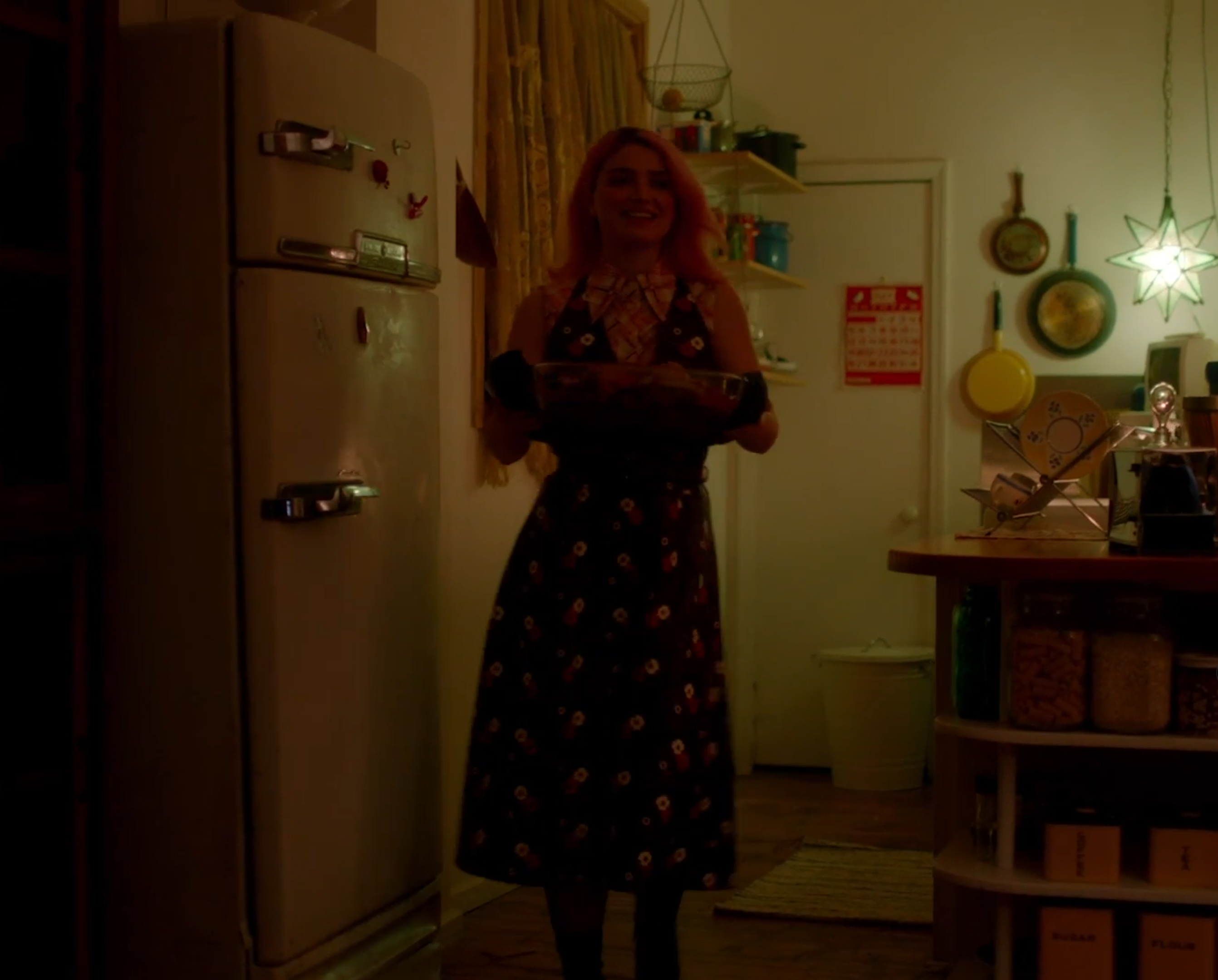
Hello Apartment – Dir. Dakota Fanning
Miu Miu Women’s Tales #15 (2018)
In these Women’s Tales, the women protagonists dressed up for themselves and their peers but certainly not for men. “I love the idea of a powder room. The ritual which takes place within them is very important to women. There’s something special about preparing yourself a moment before the action takes place. I love the sense of intimacy. It’s a place away from men, where you can check out other women, and re-glamorize yourself ready to face the world again,” Zoe Cassavetes said of the impetus of her short film The Powder Room that was shot in the actual powder room of the Claridge Hotel in London where a bunch of models Audrey Marnay, Pearl Marsland, Line Ghost, Sophie Vlaming and Caroline de Maigret come into and out of the powder room glancing and observing each other obsessively.
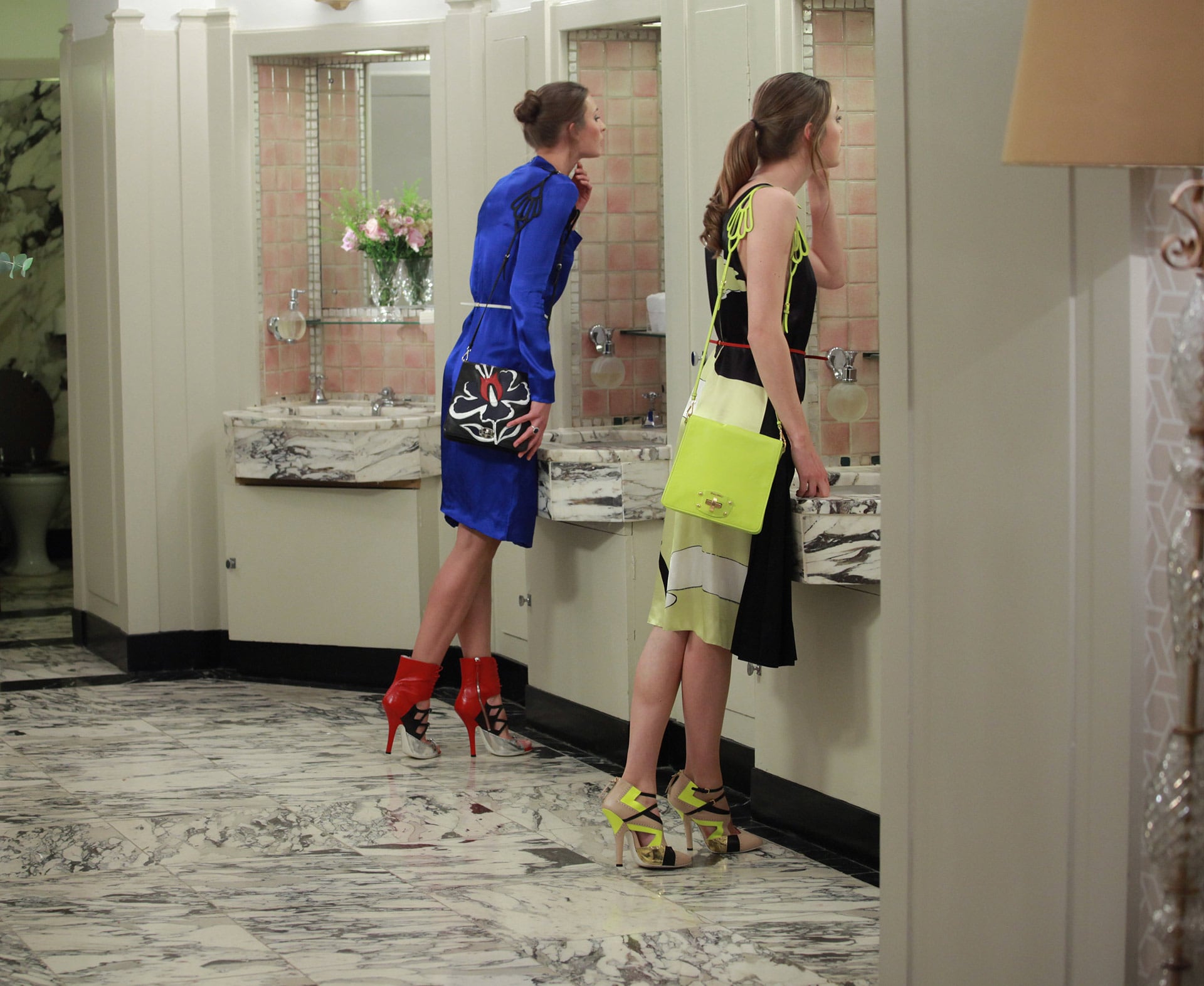
Miu Miu Women’s Tales #1 (2011)
These female filmmakers’ lenses exposed the way women are viewed, are seen, and are treated by men and by women in different parts of the world. Appearances aren’t just a principal preoccupation of fashion alone: appearances are personal, political, social, and cultural. An issue of pleasure and appearances can form the basis of personal and social identity.
As an agent of transformation, the power of fashion binds together several of the short films as a change of clothes is much more than just a change of appearance either physically or metaphysically.
The actress Gabrielle Union gained the strength to get dressed after putting her ring away in a white bra top, a navy wool jacket with a long pencil skirt, and an elbow leather glow and finally get out of the house after several of her friends attempted to lure her from loneliness and perhaps depression. “In the film, characters arrive at the door of a friend in need, bringing something of themselves. Eventually, our heroine ready to walk through the door of her own. The door in the film represents a pathway to who we are,” Ava DuVernay said of her film The Door that featured a depressed Union as some of her friends played by Alfre Woodward, Emayatzy Corinaealdi, Adeprro Oduye, and the singer Goapele who all came by to take her out to eat and to dance to alleviate her moment of suffering.
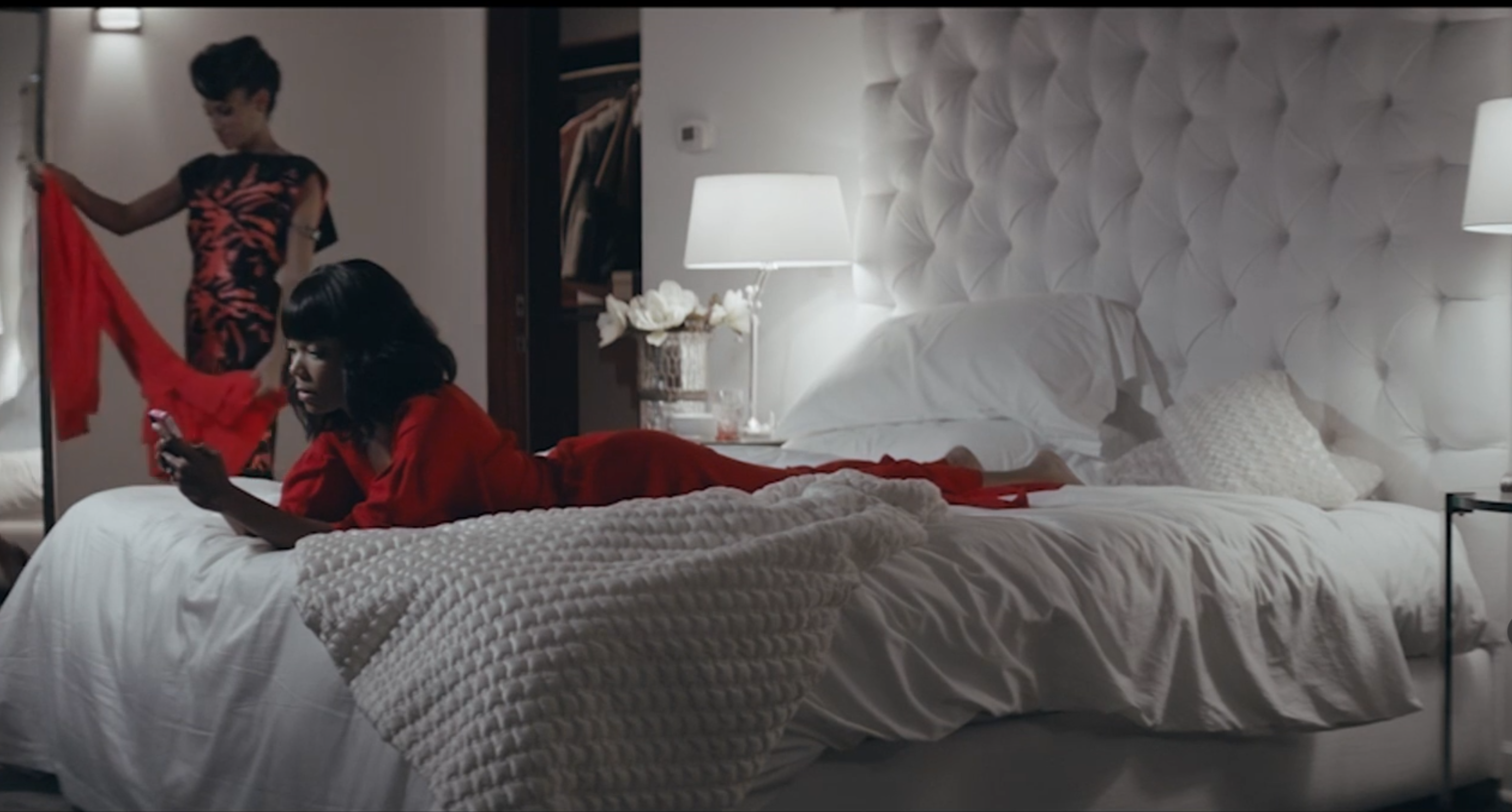
Miu Miu Women’s Tales #5 (2013)
“I felt it was right to give the lead role to a dress and put myself inside, and I realized that a garment doesn’t understand all our discussions and all our business. So I decided to shoot this shirt in an invented language to put ourselves in the garment’s shoes,” said the Italian director Alice Rohrwacher of her film De Djess that pondered the central roles that clothes played in peoples lives where dress ‘Number 328’ – a silk satin beaded halter long gown – became the protagonist choosing who to wear it in this case the maid played by the Dominican actress Yanet Mojica. The maid became the princess for an instant, spurred on by the magic of a dress.
In a tale of ritual and transcendence in the story of fashion witchcraft, the Italian actress Maya Sansa played the protagonist being transformed after baking in some magical cauldron to become a red lace dress after a chant by the witches played by Heather D’Angelo, Erika Forster and Annie Hart of the indie-pop band Au Revoir Simone from Brooklyn that compose the music for the film. “My mother was a feminist. I grew up in an environment of women, and I make movies about women. Cinema is a powerful way to bring fashion to another dimension: you can take a single image, like a dress, and create a whole world around it,” said Giada Colagrande, who directed The Woman Dress that debuted in New York in February 2012.
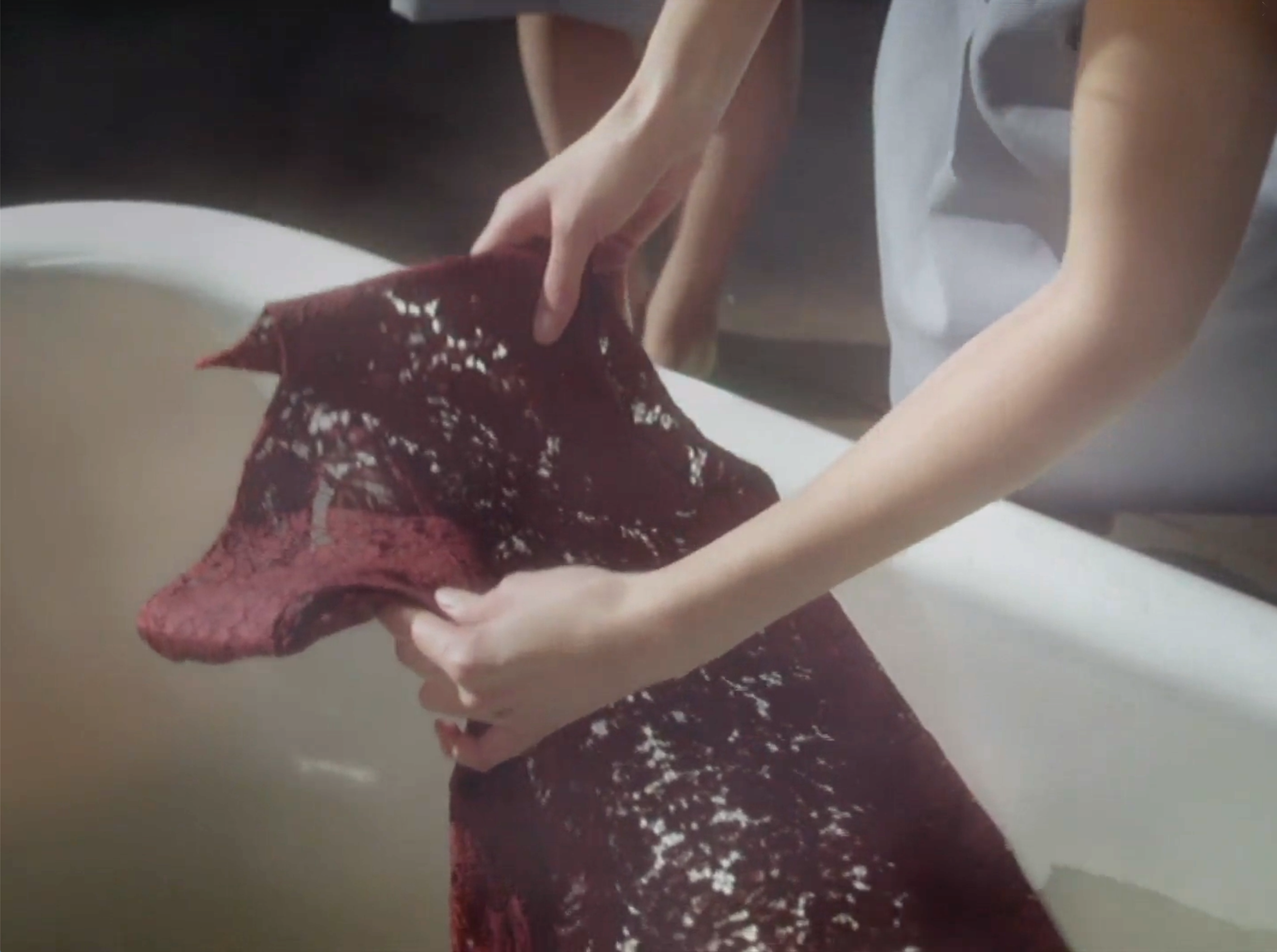
Miu Miu Women’s Tales #3 (2012)
“We make our faces, our suits, our selves just a little more ready for wherever it is we’re going. Fashion is never just the clothes. It’s our mood, our excitement for something, our expectations, our attitudes, our outlooks. Managing those is often what getting ready is all about, and that’s what our short tries to capture,” explained Massy Tadjedin, the Iranian-American screenwriter and director said about her film It’s Getting Late with an international cast Aubrey Plaza, Gemma Arterton, Patricia Clarkson, Rinko Kikuchi, and a cameo performance from Zola Jesus. These women left behind their office life and home life to get dressed up to escape temporarily to a place of pleasure far away from the bustle of daily life to hear the American singer and songwriter Zola Jesus sang her slow and melodic verses. A change of clothes signifies a change in life.
But sometimes fashion does not need to have significant meaning at all – fashion may be clothes worn, and that’s all or the Miu Miu clothes in several films that were more or less background to the storyline. “I’ve always been obsessed with family dynamics. I am always trying to develop my understanding of that,” said So Yong Kim, the Korean American director who made Spark & Light as an intertwining relationship between a young woman played by Riley Keough and her mother and family in a sequence of real and surreal dream-like fantasy that started when her car was broken on a snow road, and she drifted into a dream while awaiting rescue. In real life and the dream sequences, the clothes were more or less like the wallpapers’ patterns on the walls of the family house – they were present in the room but no more than part of the mise-en-scène.

Miu Miu Women’s Tales #6 (2013)
The same can be said of the women wearing glamorous print dresses. Eyewear from the fall 2011 collection of 1940’s era slim fitted dresses cut to the knee in Muta by Lucrecia Martel on some industrial transport boat that a group of women emerged crawling out of a locked cabin behind a round wooden door to take control of the ship and each of them went through a process of transformation just like a larva becoming a butterfly. Or in Le Donne Della Vucciria by Hiam Abbass, where the Belgian actress Lubna Azabal performed traditional Italian song, and dance music played out in the old town square in the heart of Palermo while above in an apartment a dressmaker and his wife created similar dresses for their wooden puppets. And the costumes were barely visible in Somebody by Miranda July, where all the characters tried using others to communicate. In July’s piece, everyone, including a plant, used an app ‘Somebody‘ to send messages to their loved one or friends via other people who did the actual talking – a girlfriend breaks up with her boyfriend, a man asking his fiancée to get married, or a plant needing water among other things.

Miu Miu Women’s Tales #19 (2020)
The strongest moment in the idea of fashion’s power to transcend current societal boundaries came in with the short film by the Polish director Malgorzata Szumowska’s Nightwalk that premiered in New York in early February 2020. The Polish film director and screenwriter filmed Nightwalk at night in the Polish capital Warsaw, a conservative and Catholic country where the lives of two youngsters in two different families across town, a son and a daughter who found their liberation at night on walks that encompassed personal transformation – the guy Filip Rutkowski playing himself as infatuated with identification in women’s clothes and the girl Raffey Cassidy shed her women’s clothes to become a boy as they physically exchanged their wardrobe on the night streets. A film for the right time as the idea gender identities are evolving at a fast pace displacing much of the old sets of rules governing behavior and dress.
On the opposite end, Agnès Varda’s Les 3 Buttons presented the idea of fashion as something to look at and move on from like the young country girl passing by a store and looking at the window with a black dress on display. “I immediately saw the contradictory juxtaposition of farm life and haute couture. There is a fourteen-year-old young girl who’s at that stage of life when you’re not free; you don’t acknowledge yet what you want to do or who you are. So we have a young girl who’s discovering herself. The postman represents chance arriving, bringing things, good or bad news,” said Agnès Varda about her Les 3 Boutons film. The young girl goes onto take an imaginary journey through modern-day obsessions and symbols of power after receiving a package containing a large silk magenta dress from a postman.
“Chicken coop, haute couture, low, high, young old. I am so small in a world that’s too big, in a world that’s too old, and I’m curious,” said the young girl played by Jasmine Thiré as she embarked on her trip inside the dress, first passing through a cave to a Paris street where she saw a beaded dress in a storefront window. Along the way, she lost one button, then another, and another from her blue and white shirtdress. “I like the film to convey the impression of a fantasy as well as a reflection about evening dresses and a rubber apron for milking goats or cows. The contradiction between these two types of clothes tells us about a totally unfair, unbalanced society – there’s always this contrast of life, that’s it, princesses and stupid stories and the spell are over at midnight, they have old clothes,” Varda explained.
The potential of personal and generational transformation in society became the visions of three powerful shorts from a Saudi, a Japanese, and American directors – Haiffa al-Mansour, Naomi Kawase, and Hailey Gates.
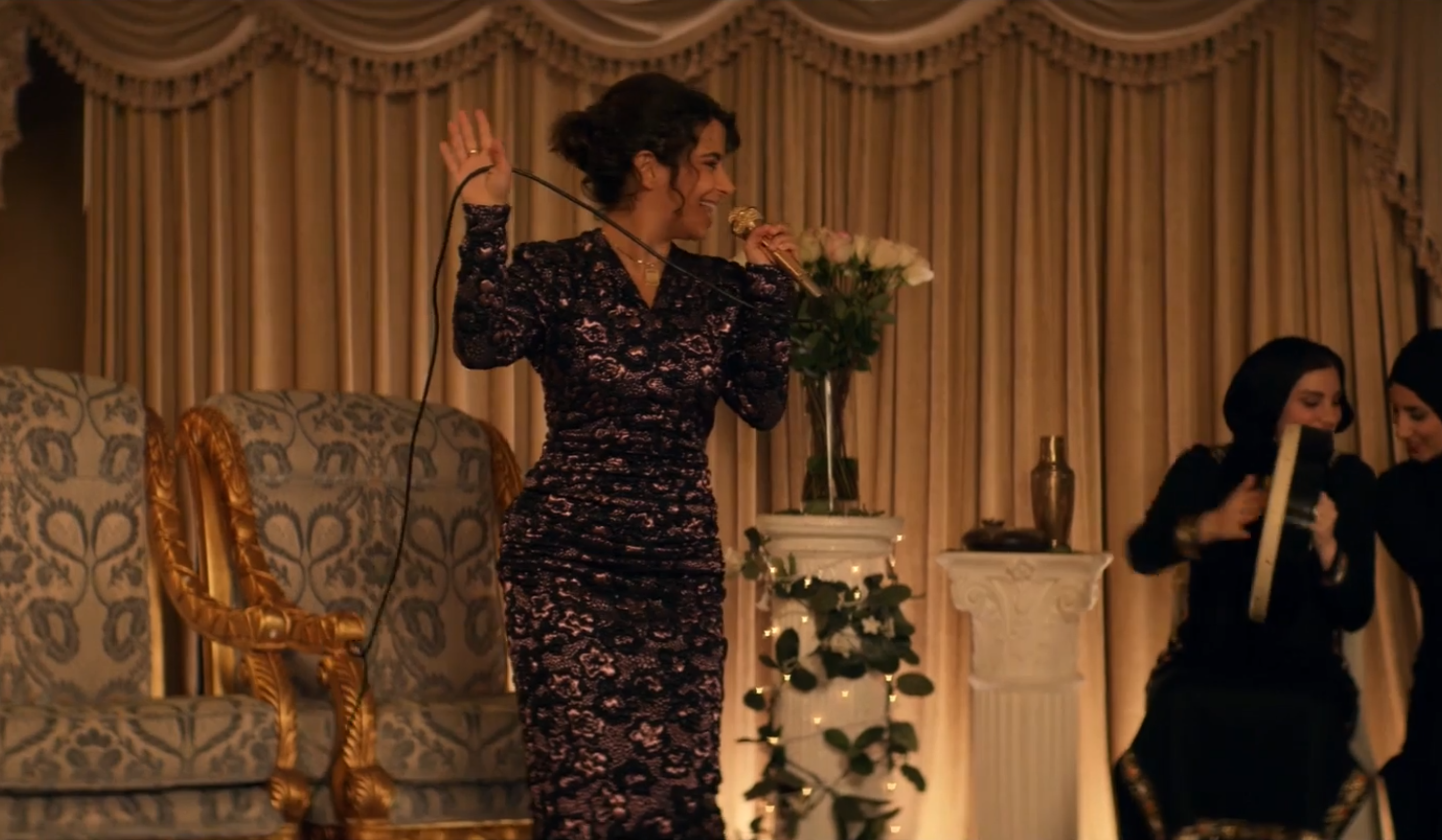
Miu Miu Women’s Tales #16 (2018)
The Saudi pop star Rotana Tarabzouni who played the lead character in The Wedding Singer’s Daughter by the Los Angeles based Saudi filmmaker Haifaa Al-Mansour, described herself and her generation as “the necessary and exciting growing pains of any society going through a reform and artistic renaissance” as life had started a cautious course of gradual change. In the film, her daughter saved the wedding from a crisis by initiating a process to reconnect an electrical outlet. “Weddings are the actual mirror of society in Saudi Arabia: segregated, fragmented, along with gender and class. I wanted to tell the story of those people, and capture that tenderness,” Al-Mansour said of the subject of her film. “For me, the little girl represents the future, and the future belongs to outsiders.”
The Japanese director Naomi Kawase made Seed as the story of a young girl played by Sakura Ando, who traveled from the countryside to Tokyo and was given a red apple. “In terms of the way of living, I wanted the character of my film to gain something, which motivates her to start something or change herself. That’s what I intended to portray. My home town, Nara, is an old city filled with history,” said Kawase of her thoughts about the kinds of exchanges – a gift of an apple, gift of leave, a gift of a nude taffeta clothe – as central to the human exchanges of hearts.
The American actress Alia Shawkat played the principal role of a bread seller and an eyewitness to the faux carnage yet full bloom theatrics of war and stereotypes, including women playing mostly set dressing roles, herself at one point wearing an off-shoulder pink taffeta dress to make a video announcement. As an actor playing a female role in this faux training camp, Shawkat maneuvered within the men’s world and men’s value system. “I became fascinated by instances of people acting, but in real life, and how that affects the psyche and your emotional state. I thought it was so interesting that we were sending soldiers to Iraq and training them in a Hollywood facility. I became very interested in people acting but in real life,” said Hailey Gates of her short film Shako Mako that depicted make-belief enactment of IED bombings simulations.
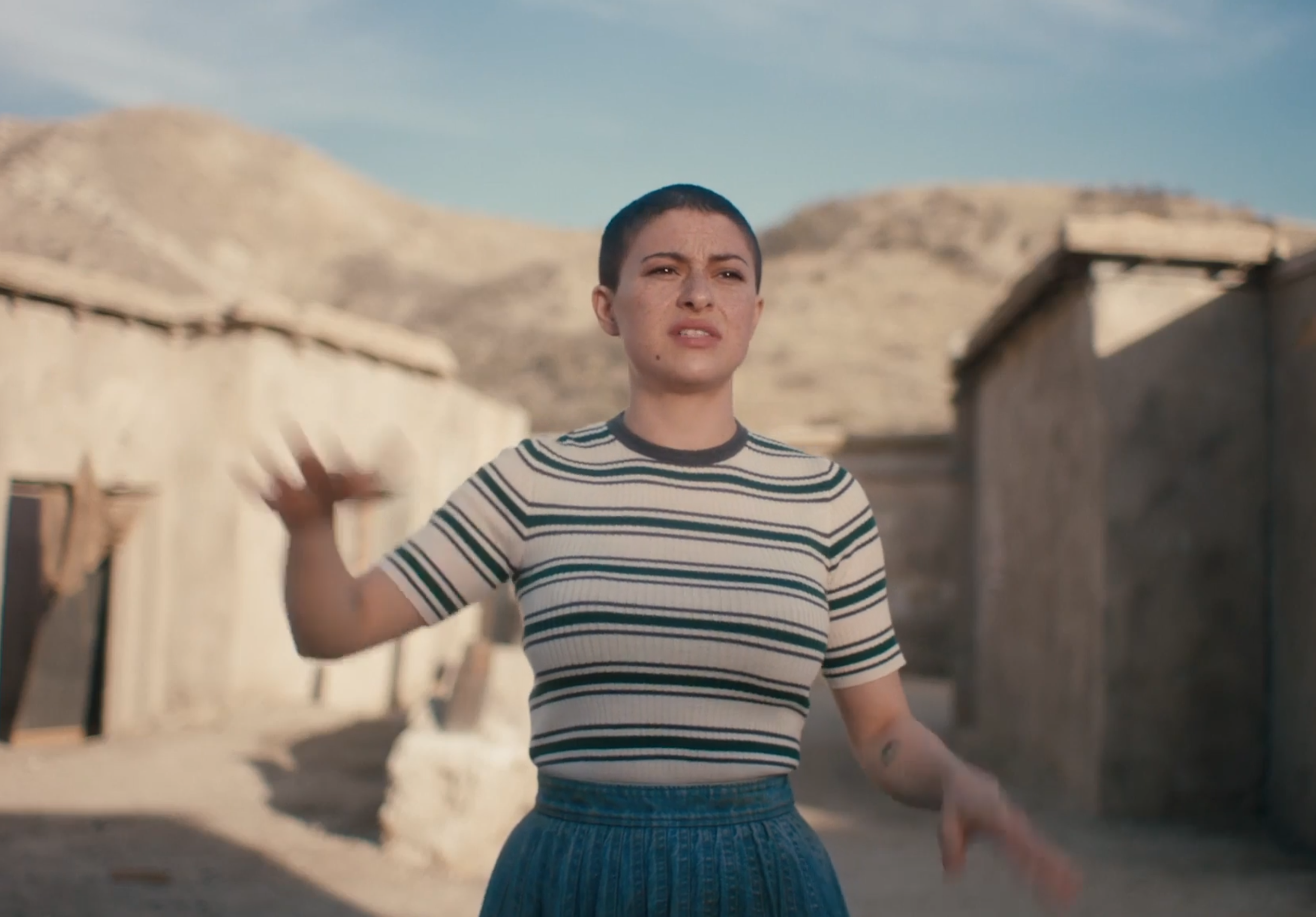
Miu Miu Women’s Tales #17 (2019)
Fashion and cinema are both creative and artisanal. More than any creative projects that the Italian brand had produced over the same span of time like advertising campaigns and even the seasonal fashion shows, these Miu Miu films are a true portrait of a young generation of women coming of age in an era full of turbulences and a culture and a society ever more asking and seeking their participation and contribution but in the same social setting where these women are still seeking and demanding their proper place. More importantly, these films fostered a sense of a community of young women, some with burning questions about their identity and their place in society.
These Women’s Tales can also be seen as contemporary cultural critiques of the changing roles of how women view women’s place in society and a purveyor to the historical visual documentation of changing times in society in the last decade like the role of women in the workplace and at home.
Can these short films also provide a defining moment of the societal tastes of their times?
Fashion acts as a pervasive force and a dialogue permeating all areas of women’s lives – glamour, desire, power, and transformation: engendered in these films are the multitude facets of this struggle and the beauty of femininity. A cavalcade of ideas of women from the idea of total surface beauty at the opulent powder room where the fully made-up women in their multicolor silk patchwork stripe or red silk dresses admire each other to the ultimate exchange of clothes and identity navigated alternately as themes.
Miu Miu is the first fashion brand to realize the potential of short films long before this medium may become a premium choice for luxury companies as budgets are shifting to generate the digital experience that is still very much missing on the creative marketing landscape. Imbued the fashion with such diverse and intense personal narratives are how to talk to young consumers today as individual and social values and identifications are becoming the pillars rather than the verifiable metrics central to the language of brand visual and verbal communications across all platforms.
For a luxury brand today, nothing is more crucial than building communities of like minded audiences and prospective customers, engaging the audience outside of the closed realm of fashion media circuitry perhaps is one the most difficult tasks for brands to execute creatively that makes is natural rather than forceful.
The films also serve to expand the meaning of Miu Miu beyond a fashion brand via events surrounding the launch of the films, principally at the Venice Film Festivals where a slew of the films featuring the fall collections were premiered. Traditionally each launch is followed by a ‘Miu Miu Women’s Tales Conversations’ such as the one in Venice in September 2017 where director Celia Rowlson-Hall, Chlöe Sevigny, Kate Bosworth, and the actresses Laura Harrier, Kiernan Shipka, and Rowan Blanchard discussed the specific films that they had worked on – together they helped to cement Miu Miu as a cultural and social creative space along while wearing the dresses and shoes on the stage.
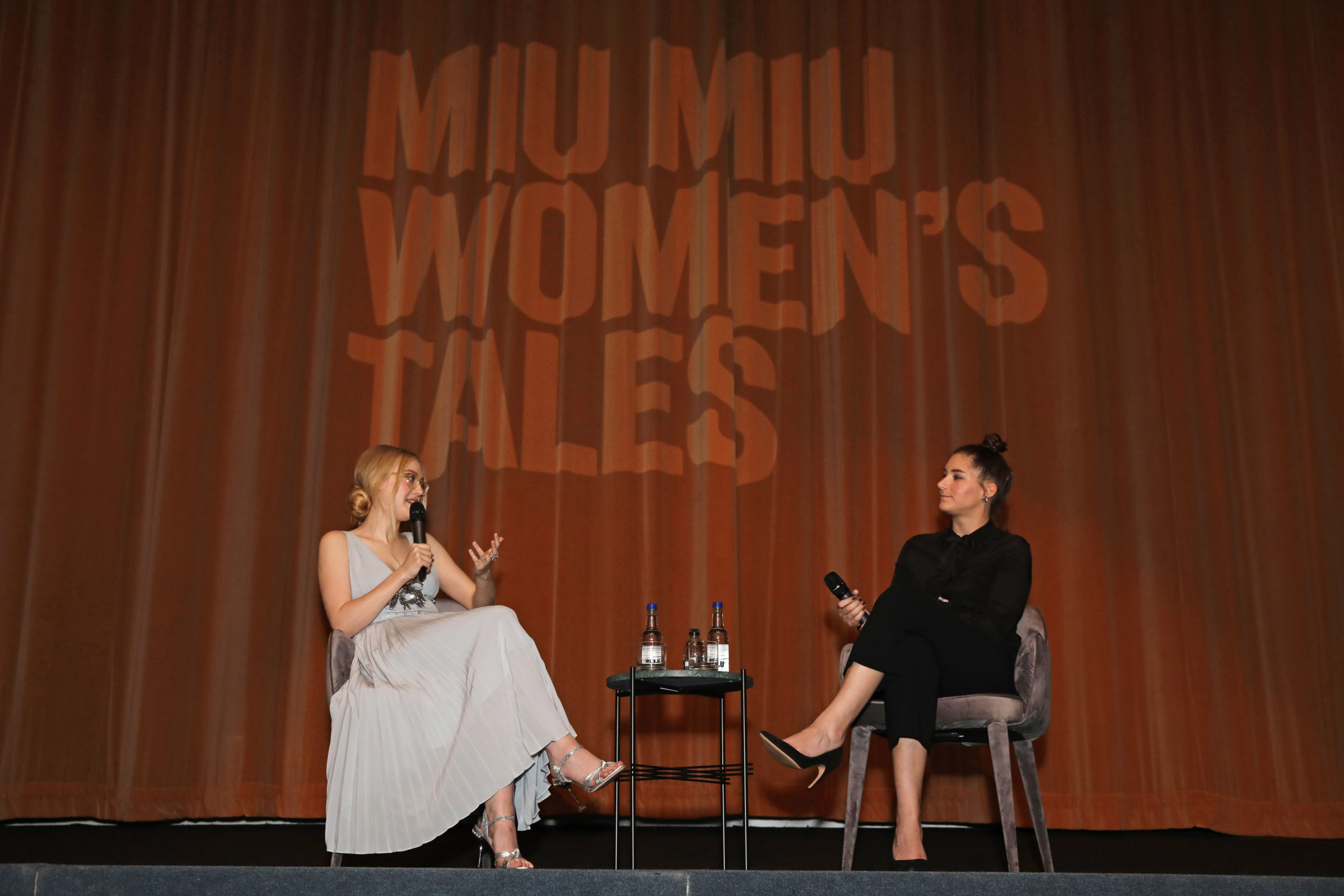
Dakota Fanning | Q&A at the Miu Miu Women’s Tales #15 Screening in London 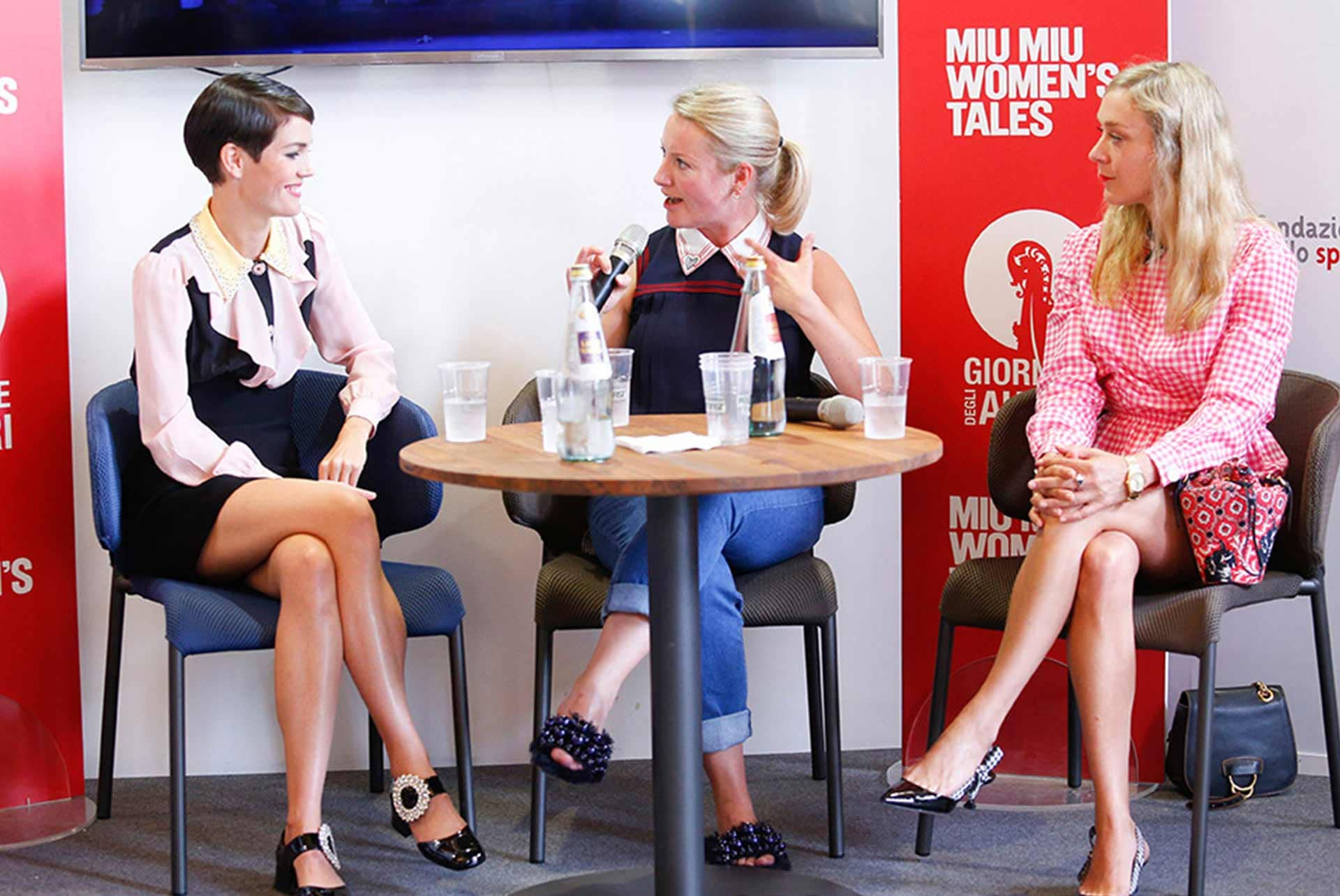
Celia Rowlson-Hall, Penny Martin, Chlöe Sevigny
6th ‘Miu Miu Women’s Tales Conversations’
In early September 2020, dirctors Malgorzata Szumowska and Mati Diop presented and discussed their respective films, while Szumowska also entered new works in the Venice festival –with Never Gonna Snow Again. Szumowska was in New York in February when her Nightwalk premiered at a theater in the East Village, followed by a discussion with the two cast members about the conditions in their homeland where the film was made. These panels and events further spread the messages to the Miu Miu community that are perhaps a bit outside of the immediate fashion accolades and fans. It is a way to build shared values and awareness, not necessarily to sell products, at least not immediately.
And to cap it all off in our digital age, a Miu Miu films Instagram account was launched in 2017. Many of the films had special premieres in Los Angeles, New York, London, as well as at the Venice Film Festival.
The Miu Miu brand wants the young women who can identify themselves in these films to become family members like a large sorority club sharing ideas. And of course, clothes and perhaps fabulous shoes and handbags. What may have started as The Powder Room in 2011 as perhaps a commentary on the preoccupations and obsessions with surface beauty, in glances that reduced women to objects by the women themselves, has in a decade evolved into a sort of community gathering of powerful voices for women in these new ‘Power Rooms.’
